Walking the Moon with my own Photos - Full Moon
On these pages I do "moon walks" on the basis of my own photos. In other words, I try to name the objects on my lunar photos to get to know the moon better. Maybe these pages will help others to get to know the moon better as well...
On this page, the moon is full or around full (shortly before or after Full Moon). See also page From Half Moon to Full Moon (RX10 M3).
Back to the overview of my "moon walks".
Introduction
When the moon is full or almost full, the shadows disappear and with them the relief and also the craters and mountains. But at least you get a good overview of the "moon seas" (Mares) and their location. In addition, in the south you can easily see the Tycho crater and the rays emanating from it (ejected material from the relatively young crater). The craters Copernicus and Kepler can also be seen well. And the craters Aristarchus in the west and Proclus in the northeast appear as two particularly bright spots.
Photos
Shortly Before Full Moon (1)
These newer photos of the moon was taken on February 28, 2018 - two days before Full Moon (March 2, 2018, shortly before 2 a.m.). The photos were taken with the Sky-Watcher Skymax-102 or 127 OTA using the projection method.
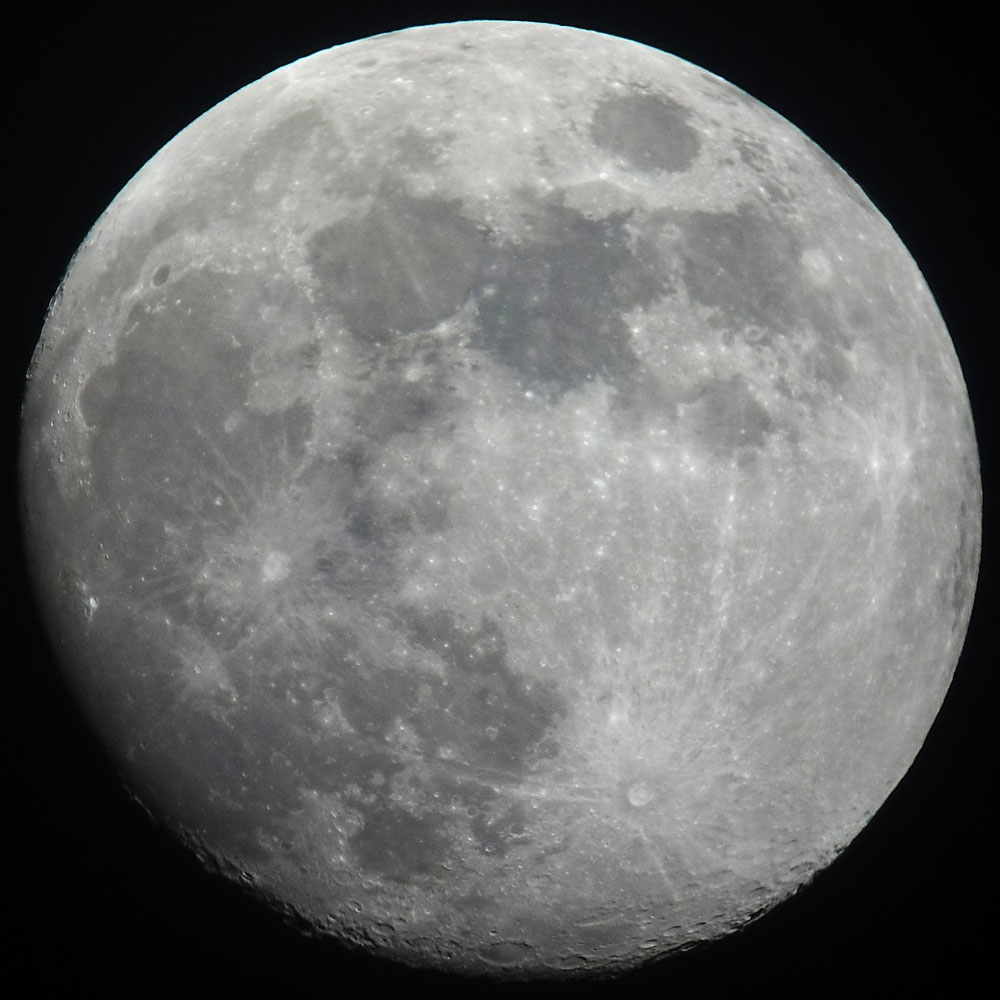 |
 |
|
2200 pixels (ISO 400, 28 mm equiv.) |
||
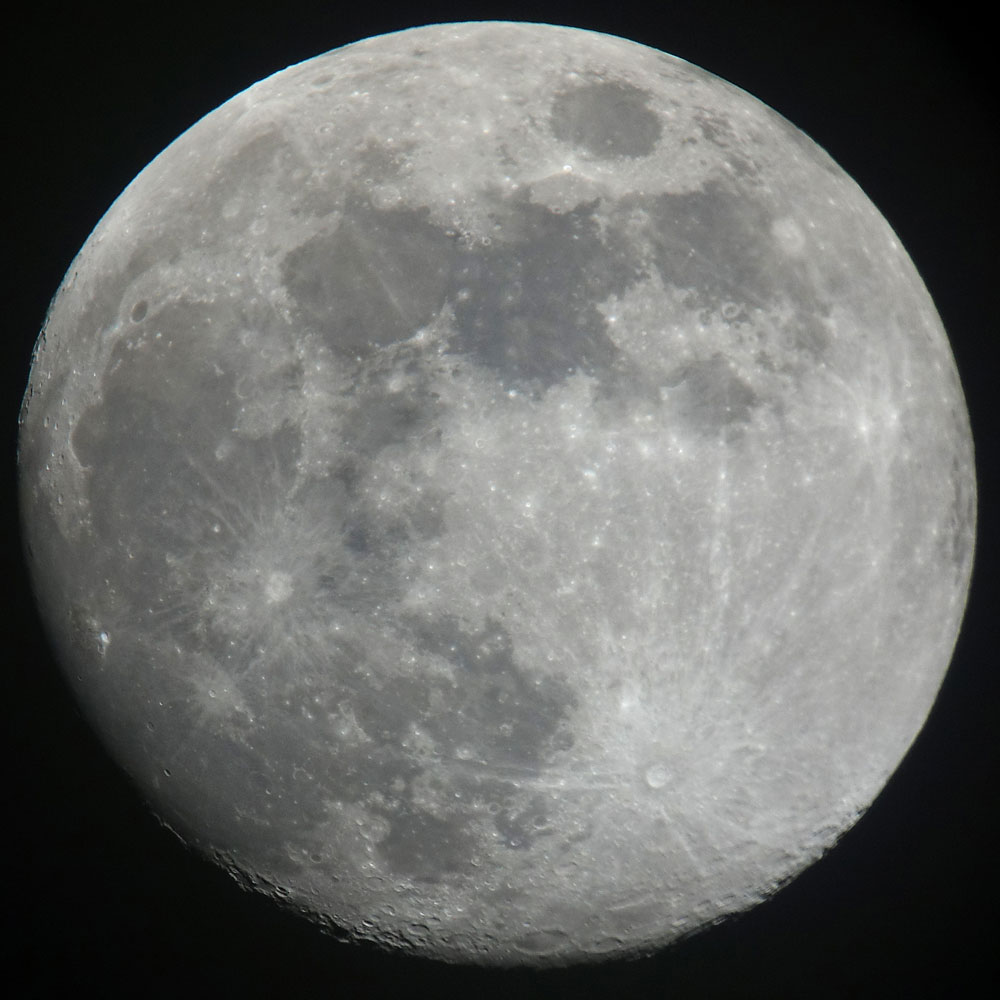 |
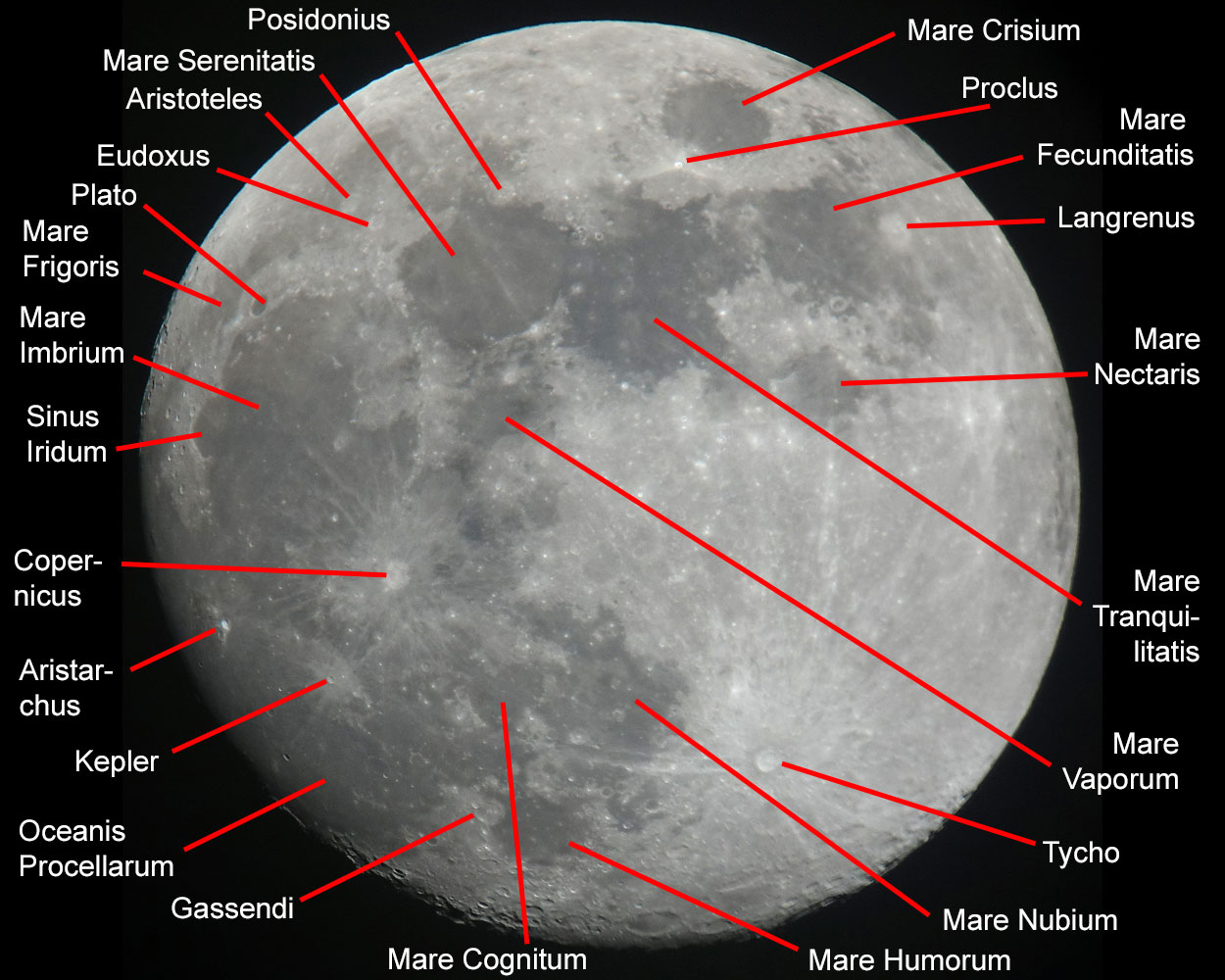 |
|
2700 pixels (ISO 200, 35 mm equiv.) |
Photo data: March 29, 2018 (two days before Full Moon), Sky-Watcher Skymax-127 OTA, Sony RX100 M4 attached to the 32 mm eyepiece
Shortly Before Full Moon (2)
This newer photo of the moon was taken on February 28, 2018 - two days before Full Moon (March 2, 2018, shortly before 2 a.m.). It was taken with the Sky-Watcher Skymax-102 or 127 OTA using the projection method. The crater Luther crater (10 km in diameter) is clearly visible in the larger version.
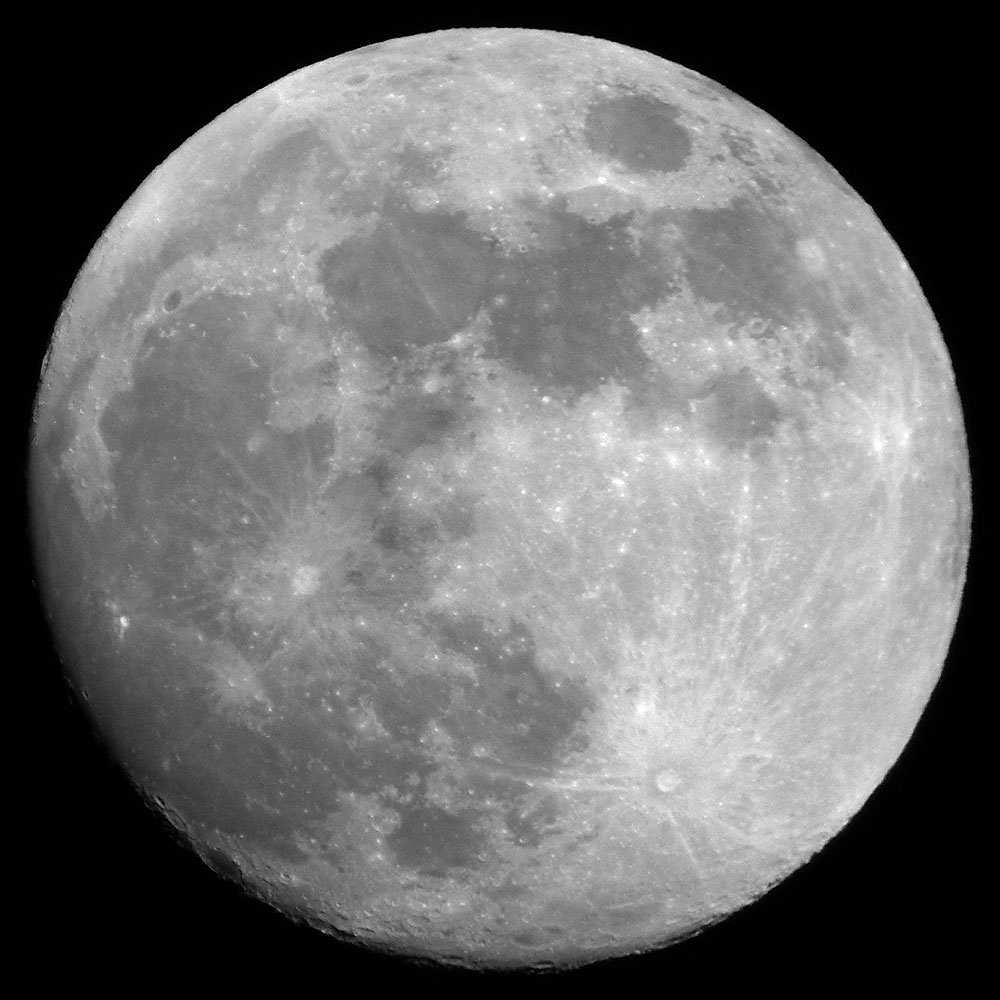 |
 |
The same photos, only the seas labelled (completely):
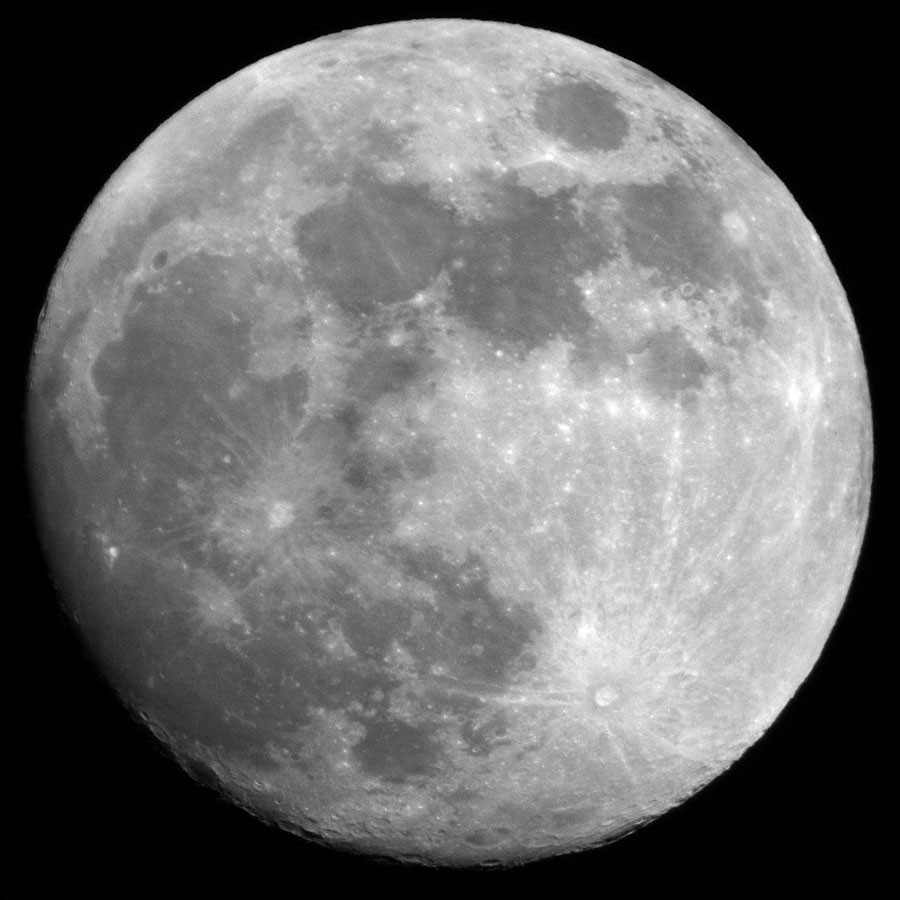 |
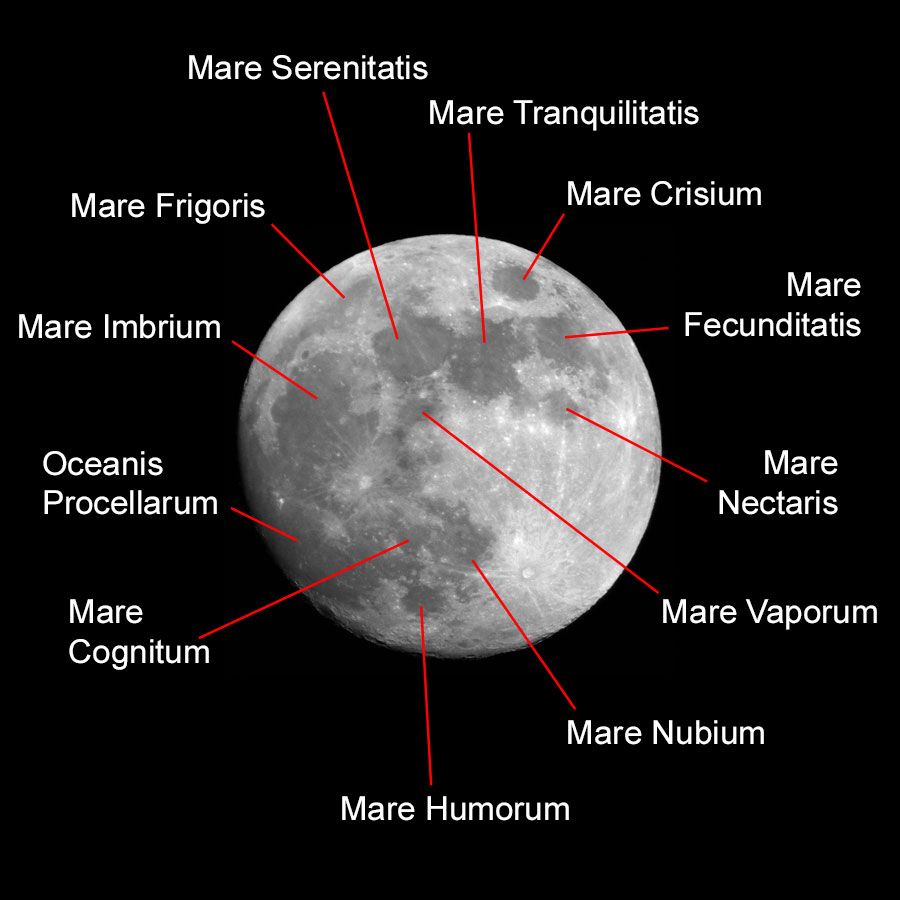 |
|
Photo data: February 28, 2010 (nearly Full Moon), Sky-Watcher Skymax-127 OTA (probably), Leica X Vario (36 - 50 mm equiv.) held to a 32 mm eyepiece (47 x)
Full Moon
The following photo of the Full Moon was taken on April 27, 2010 with a Heritage P130 telescope and the camera attached fix to the eyepiece (projection method).
The crater Posidonius P (15 km in diameter) can be seen in the larger version of the photo, Posidonius Y (2 km) can be seen with a very good will...
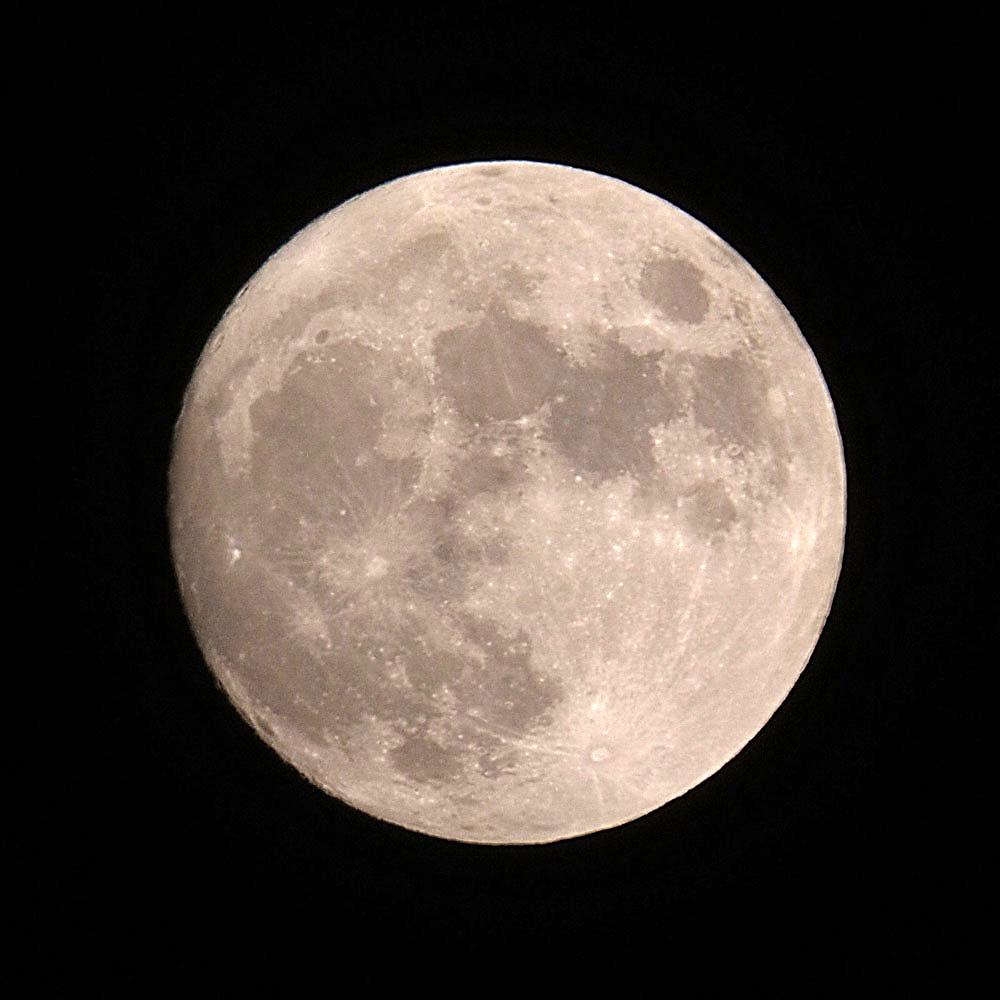 |
 |
Photo data: April 27, 2010, Ricoh GXR with A12-50, camera attached to the 32 mm Digiscope eyepiece
Full Moon (2)
The following photo of the Full Moon was taken on January 20, 2019 with a Skymax-127 telescope and a Sony RX100 M4 camera attached fix to the eyepiece (projection method).
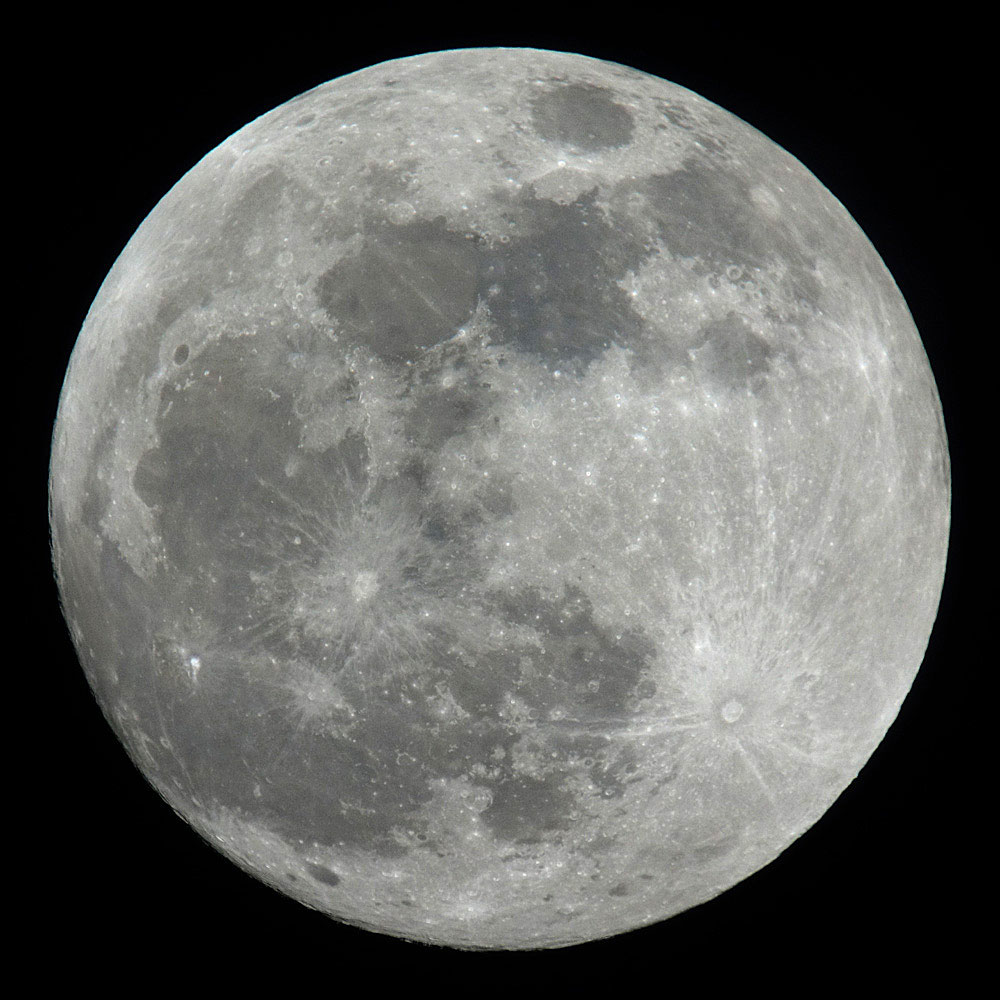 |
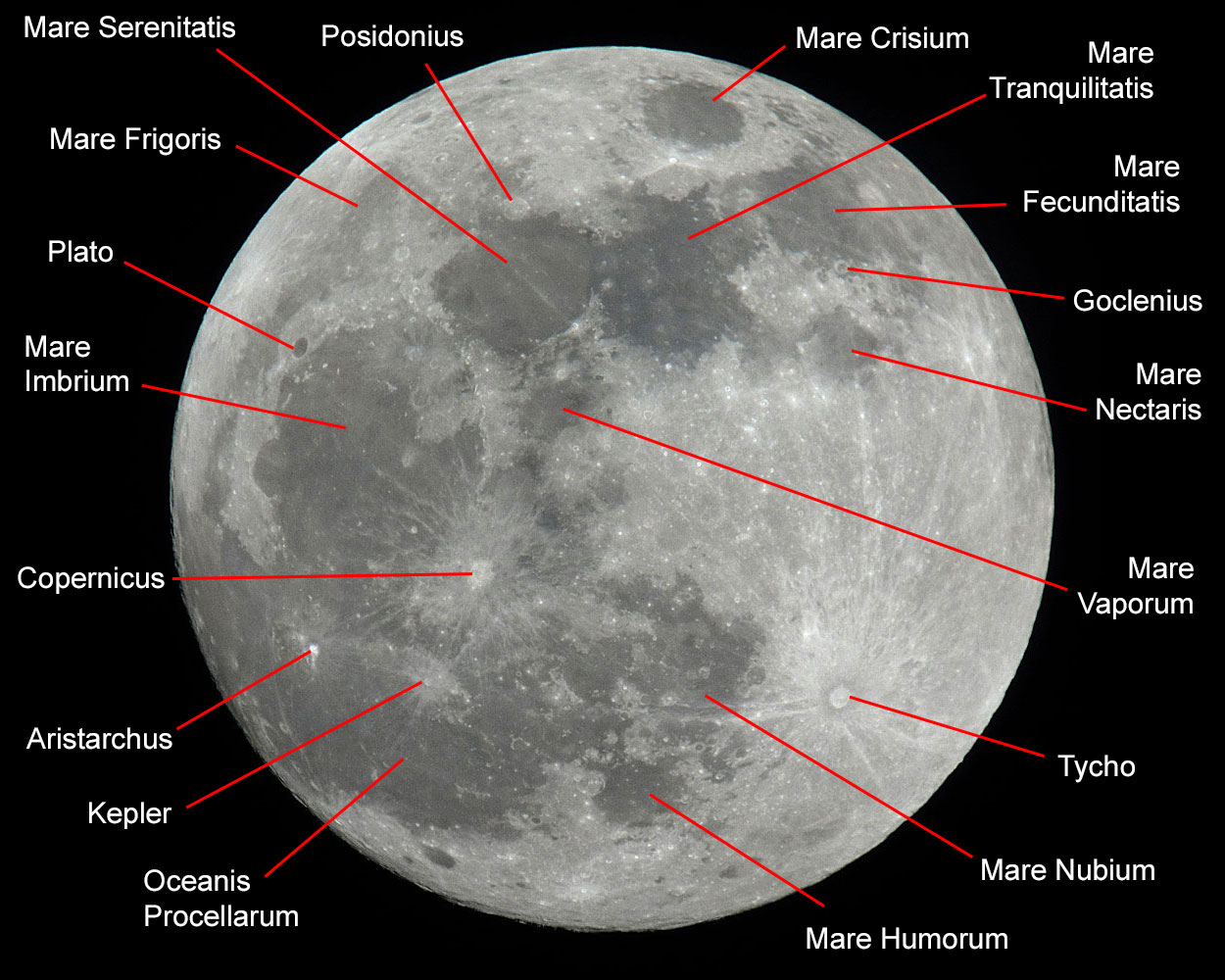 |
Photo data: January 20, 2019, Sony RX100 M4, camera attached to the 32 mm Digiscope eyepiece
DSLR Photos
The following photos were taken with a Minolta Dynax 5D DSLR with a Sigma 70-300mm zoom lens, not a telescope. Therefore, the images are correctly aligned. As there are already craters on the right side of the moon, the photos were taken shortly after the Full Moon.
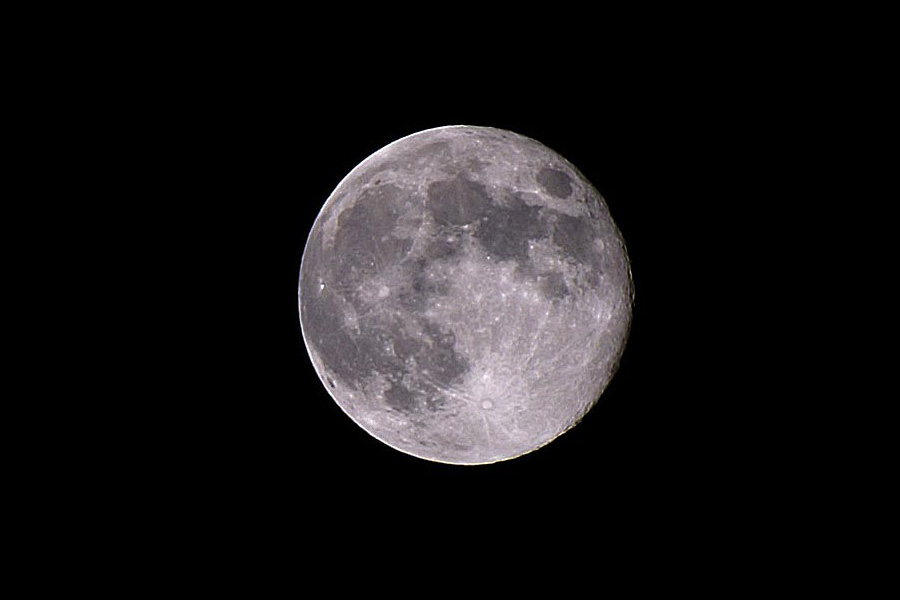 |
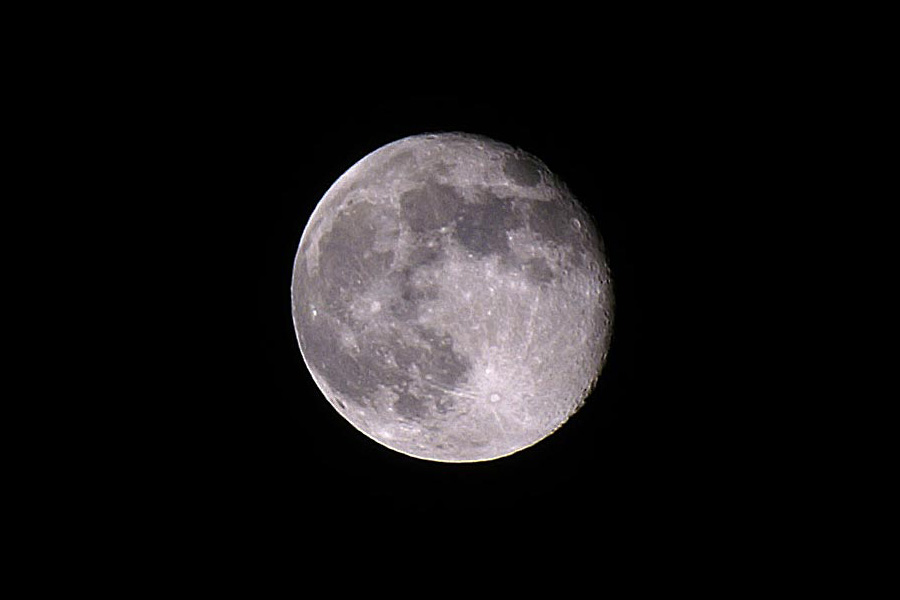 |
|
Nearly Full (Just after Full...) |
Not Quite Full Anymore... |
|
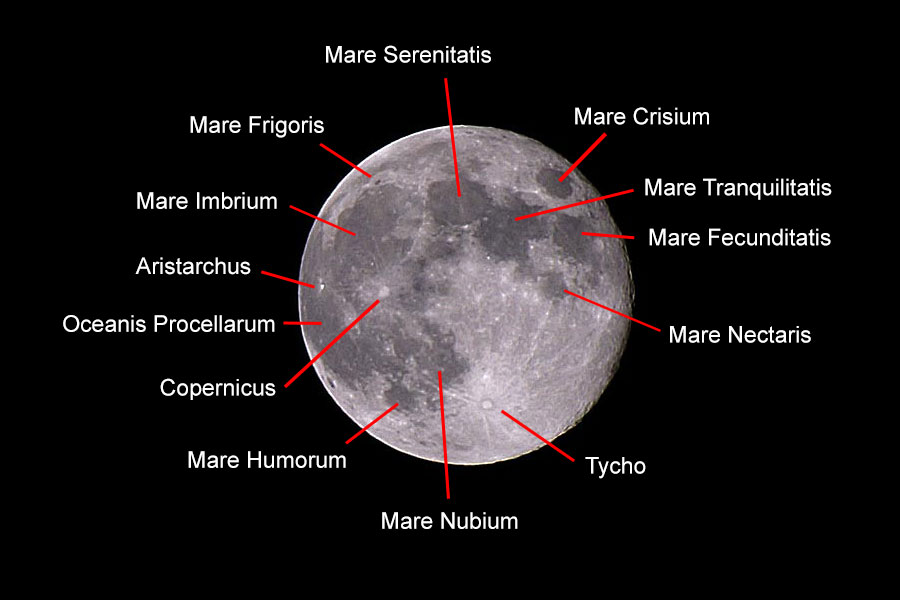 |
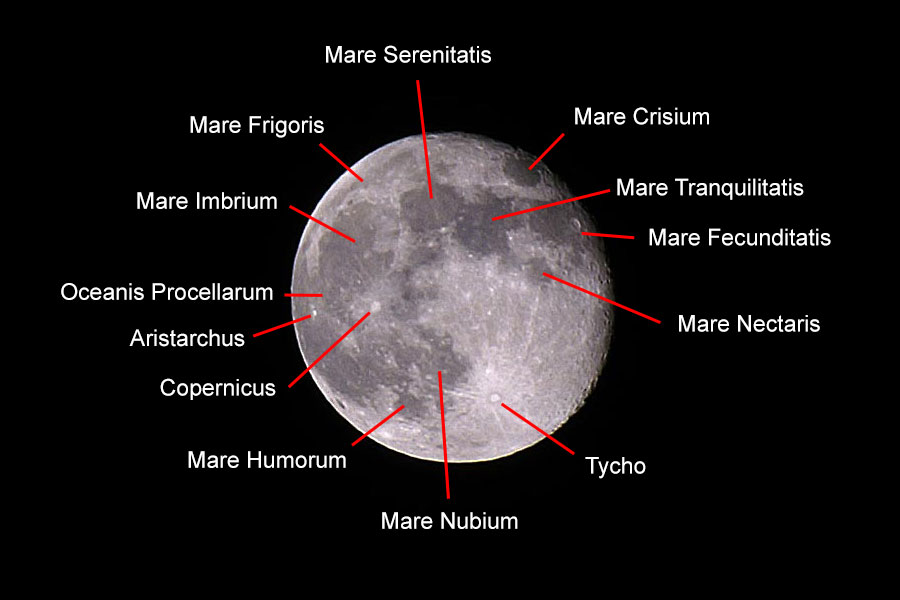 |
|
Nearly Full (Just after Full...) |
Not Quite Full Anymore... |
Photo data: November 17, 2005, Minolta Dynax 5D with Sigma 70-300mm zoom lens
References
- Mond (Wikipedia): de.wikipedia.org/wiki/Mond
- Moon (Wikipedia): en.wikipedia.org/wiki/Moon
- Lambert Spix (2013, 3. Auflage). moonscout - Mondmeere, Krater und Gebirge einfach finden und beobachten. Oculum-Verlag. ISBN 978-3-938469-58-3
- Lambert Spix & Frank Gasparini (2011, 1. Auflage). Der Moonhopper. Oculum-Verlag. ISBN 978-3-938469-54-5
- Ronald Stoyan, Hans-Georg Purucker (2013, 1. Auflage). Reiseatlas Mond. Oculum-Verlag. ISBN 978-3-938469-64-4
- Virtual Moon Atlas: ap-i.net/avl/en/start
| 09.03.2019 |